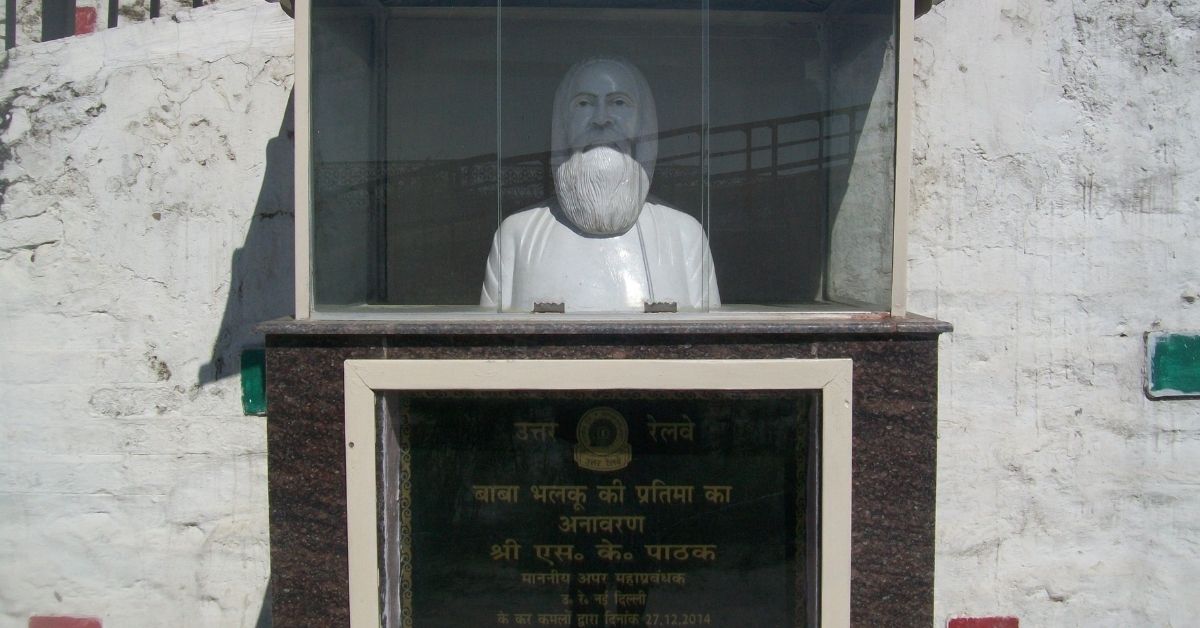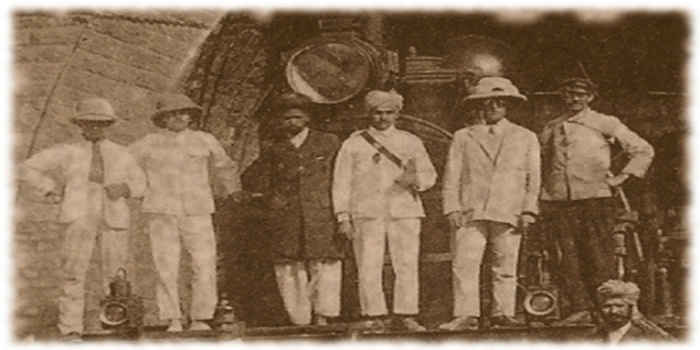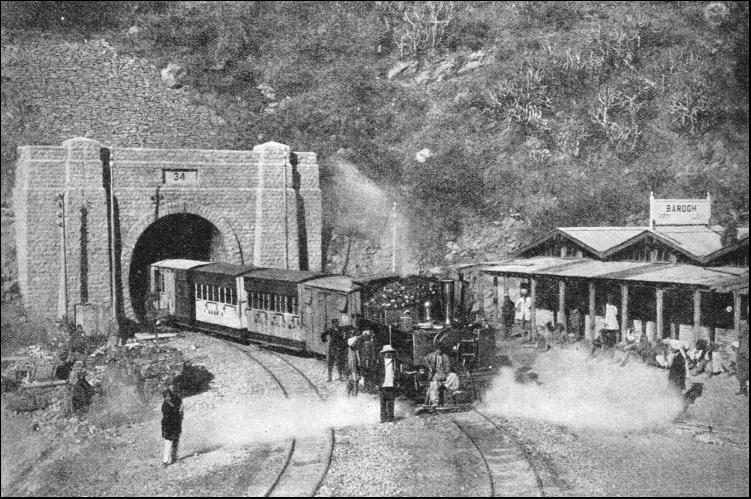Millions of travellers use the Indian Railways every day. Traversing tunnels, bridges and some truly stunning terrains, its numerous routes span the length and breadth of India. But perhaps no part of the system is more impressive than the tracks that brought rail service to isolated communities in the rugged Himalayas.
Did you know that the narrow-gauge Kalka-Shimla Railway has the steepest incline or that it delves through 102 tunnels, the largest of which is over 1,000 metres long? The UNESCO heritage toy train also crosses 864 bridges and viaducts while chugging through forests of maple, deodar and pine.
And yet few Indians know about the man who is believed to have played a pivotal role in building this outstanding feat of engineering. We are talking about Bhalku Ram, a shepherd whose guidance helped the British lay the Kalka-Shimla railway track.
The Baba Bhalku Rail Museum set up by the Northern Railways in Shimla is named after him.
 Statue of Baba Bhalku at the Shimla Railway Station
Statue of Baba Bhalku at the Shimla Railway Station
Photo Source: Wikimedia Commons
The light at the end of the tunnel
Bhalku Ram’s story begins in 1903 when the Shimla-Kalka railway track was being laid under the supervision of Colonel S Barog, a British engineer. To create the longest tunnel on the route, Barog got his team to begin digging from both ends only to find that he had made a gross error in calculating the alignment.
His mistake attracted a sharp reprimand and a fine of Re 1 from the British government for wasting their time and resources. Col. Barog felt so humiliated that he committed suicide.
Locals believe that the engineer was buried somewhere near the incomplete tunnel, which can still be seen about a kilometre away from the completed one.
 Col Barog and his team
Col Barog and his team
Photo Source: Mysterious Himachal
His successor, Chief Engineer HS Harrington, faced the same problem. That’s when Bhalku Ram, a humble shepherd from Jhajha village near Chail, offered to help Harrington build the tunnel.
There are no records available on whether Harrington found Bhalku first or vice versa. But what is well-known is that Bhalku joined the British team of engineers and soon became the most important man in it.
Legend has it that ‘Baba Bhalku’—as he was called by locals, respectfully—would tap the walls of the mountain with his solid wooden staff. Listening to the sounds produced, he would then mark out points for Harrington’s team to dig.
Under his guidance, the British finally managed to complete the 1143.61-metre-long tunnel which is today known as the Barog tunnel (no 33). Needless to say, Bhalku and his extraordinary skills were then employed to build the rest of the tunnels on this route.

Tunnel No 33 at the Barog Railway Station
Photo Source: Mysterious Himachal
For his efforts, the British Viceroy presented Bhalku Ram with a medal and turban that are still treasured by his family. It is also said that after the completion of the Kalka-Shimla track in 1903, Bhalku went on a pilgrimage, from which he never returned.
Interestingly, there are several plaques in Shimla’s Baba Bhalku Rail Museum, in which glowing testimonials have been poured on ‘Balkoo’ by British officers.
Here’s one by Lieutenant Colonel H Moore, dated October 17, 1875:
“All I can say is that I have known Balkoo for the last 14 years; that he is not only an excellent public servant but a highly esteemed and excellent man, whose charity and benevolence is known throughout the hills to all.”
Another testimonial issued by Major RM Lang in 1875 says, “He has an instinctive aptitude for selecting the best line for a road across the precipitous country.” While Deputy Commissioner of Hill States, WM Hay, wrote, “I should be sorry to leave the Simla hills without giving my friend Balkoo a few lines testifying to his values as a government servant. A most indefatigably industrious, single-minded, and honest man.”
So, the next time you visit Shimla, drop in at the Baba Bhalku Rail Museum and pay your respects to the forgotten shepherd who helped build one of India’s most challenging railway projects.
Read More: Konkan Railway: An Incredible yet Little Known Indian Success Story
(Edited by Yoshita Rao)
No comments:
Post a Comment